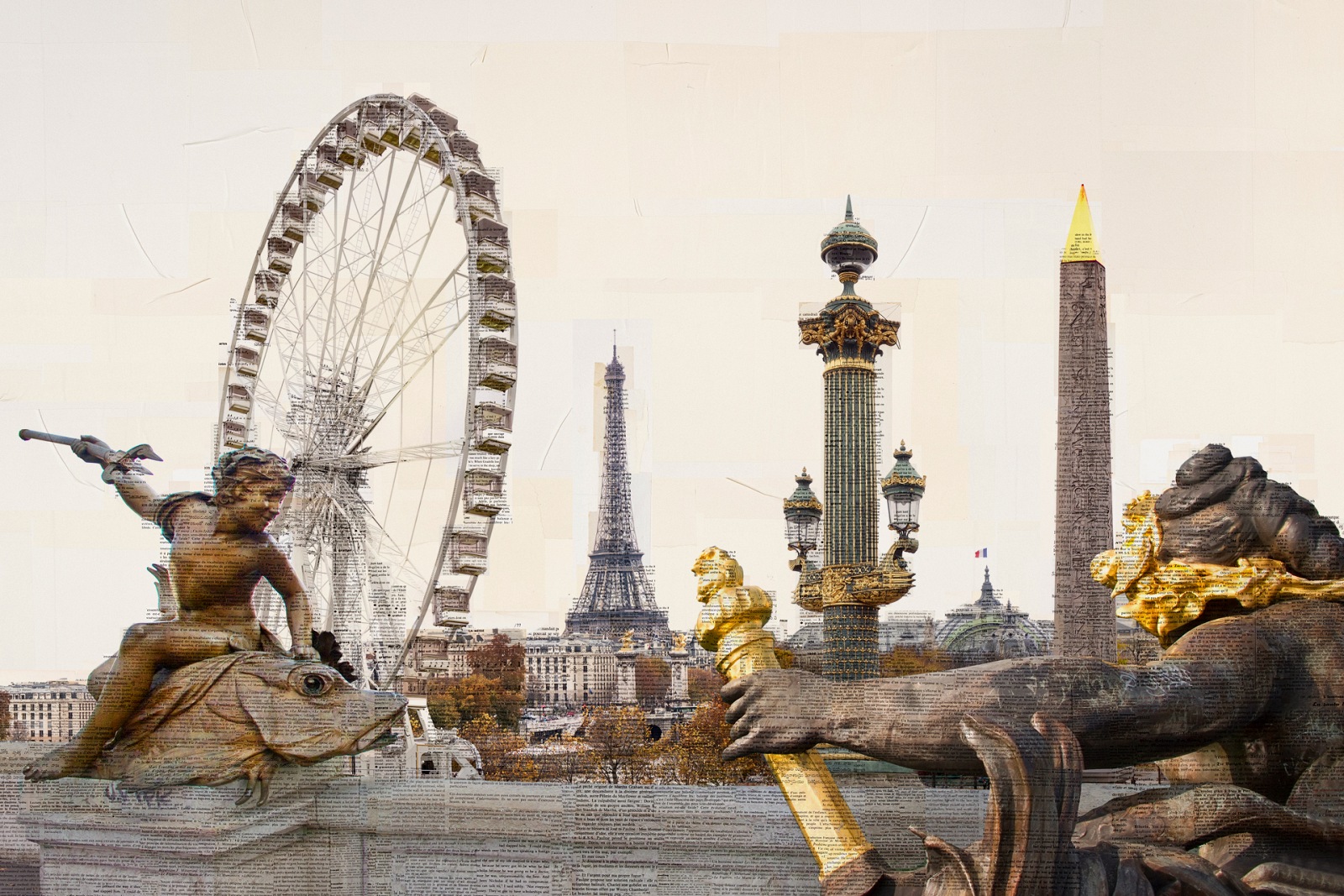A succession of words, overlap an anthropized landscape. In the foreground, two sculptures of anthropomorphic forms seem to want to direct our gaze towards what stands in the background. An obelisk with a golden point, a glitzy lamppost, a modern Ferris wheel to which is added, piled up on levels very close together, some buildings, two columns, a dome over which flies a European flag and a tower, unmistakable.
The reference of the image is now clear, but the interweaving of printed words, placed so on the framed surface, redesigning the volumes and reasons of each single element contained in it, almost as if they were unlikely ink bricks, they impose to approach this work differently from how you would deal with a simple view of Paris.
Behind I piantatori di monumenti (The planters of monuments) – this is the title of the work which, because of its ability to disregard an apparent immediacy of meaning, we have chosen to open our third issue – there is in fact a conceptual operation much more sophisticated and complex, in which it is the word, the linguistic sign with all its historical and symbolic relevance, to become particularly significant in the interpretation of the figurative structure.
|
|
If it is true that the language of the media between reality and the idea we have of it, and the word is the sign that conventionally allows us to convey this mediation, the iconic and symbolic operation implemented by Nicholas Quirico with this stratified image – and by extension the entire project in which this collage is part – could be read as an elaborate attempt to suggest a new interpretation of urban spaces, and the works of human genius that populate them, from a strictly cultural point of view that, in some ways, question the perception that we normally have.
Our cities are in fact the fruit of awareness, visions, knowledge and skills handed down from generation to generation. Symbolically they are the result of ideas of reality transmitted to words in books and transposed into reality through concrete actions that led (and will continue to lead) to the building up of their every small detail. Their architectural identity cannot overlook the cultural effect of the place in which they arose. As, it is an integral and established part.
[ Stefania Biamonti ]
|

 home
cover ▼
opinions
news ▼
portfolio
post.it
post.cast
video
ongoing
thematicpaths
googlecards
FPtag
home
cover ▼
opinions
news ▼
portfolio
post.it
post.cast
video
ongoing
thematicpaths
googlecards
FPtag

